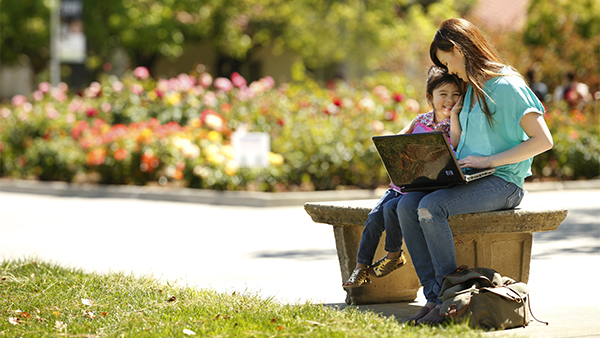The idea of work-life balance and technology has changed dramatically since Dr. Julie Olson-Buchanan, interim dean of the Craig School of Business, began research in the area roughly 15 years ago.
“When we first started, it was a novelty to access your email or to have cell phone access or to be reachable outside your work hours,” said Olson-Buchanan, also a professor in the Department of Management. Now “more and more what we’re looking at is being ‘on’ 24/7 in all aspects of your life.”
These days, the line between personal and professional worlds is increasingly blurred as communication technology becomes more sophisticated and commonplace. That’s especially true now as the COVID-19 pandemic forces more people to work at home.
Olson-Buchanan specializes in research that explores how workers using technology react and set boundaries to manage well-being and minimize work-life conflicts. She’s published a variety of studies and articles and currently is a research collaborator on a Norwegian grant focused on the subject during shelter-in-place restrictions.
It’s fertile ground for research as employees — many of whom have never worked at home — adjust to the times. Yet long before the pandemic upset the balance, Olson-Buchanan was tracking the evolution and its repercussions.
“This is a change in society, but also a change for individuals who previously left their workplace and it (work) all stayed there,” Olson-Buchanan said. “Maybe they would think about things, maybe they would ruminate on things or maybe they would bring reports to read at home.
“But now, it’s so much more accessible — even outside of sheltering-in-place — where you can access your email on your phone, you can be called and you can be texted in both directions.”
Reactions to this dynamic may depend on how much workers separate or integrate their two worlds. For example, “segmenters” prefer to draw a distinct line between work and personal lives and can react strongly to interruptions.
“Integrators” see time as more multi-purpose and have less difficulty moving between worlds, Olson-Buchanan said. Yet both types of individuals can struggle to balance work and personal life in the era of an electronic leash.
“I think what we see more than ever is an increased expectation that people will be available during off-hours,” she said. “That is most worrisome because there’s quite a bit of research that suggests we need to disconnect from work — if we don’t, we do not recover from work and when we don’t recover then we are less productive.”
In fact, early research suggested that using communication technology to work during off hours took a greater toll than simply working the same number of hours at the office — and then disconnecting at home, she said. The bottom line is that boundaries, and recovery time, are critical to the work-life balance.
“We do better when we’re rested and when we have time away from work,” Olson-Buchanan said. “Boundaries around technology help us to do that.”
The situation is more complex today as many people work at home. Stories about Zoom photo bombs, doorbell interruptions and other surprises are pretty common — even at Olson-Buchanan’s house. For example, her husband was playing Bob Dylan one day while her daughter was giving an online presentation “that was not about Bob Dylan,” Olson-Buchanan said.
Balancing those two worlds at home can be challenging, so it’s important to be kind, she said. “And really be present wherever you are.”
Tips for working remotely (especially in the current climate):
- Set boundaries between work and non-work in both time and space. Whether it’s an office or a corner of the dining room table, designate a space for work along with specific work hours. Then honor those boundaries.
- Maintain a routine. If you generally get up, have breakfast and dress a certain way for work, continue that routine. That makes it easier to see the distinction between work and personal time.
- Consider transition time. Your commute provides time to transition to the work day (and then back home). Think about taking a walk before and after work hours to ease into the next part of your day.
- Communicate boundaries. Let co-workers know that you won’t answer emails after 6 p.m. (they may figure it out when you don’t respond) or that you can’t meet during certain hours because your children are accessing schoolwork.
This story was first published on Fresno State News. Please use the Fresno State News link if sharing on social media.
|


